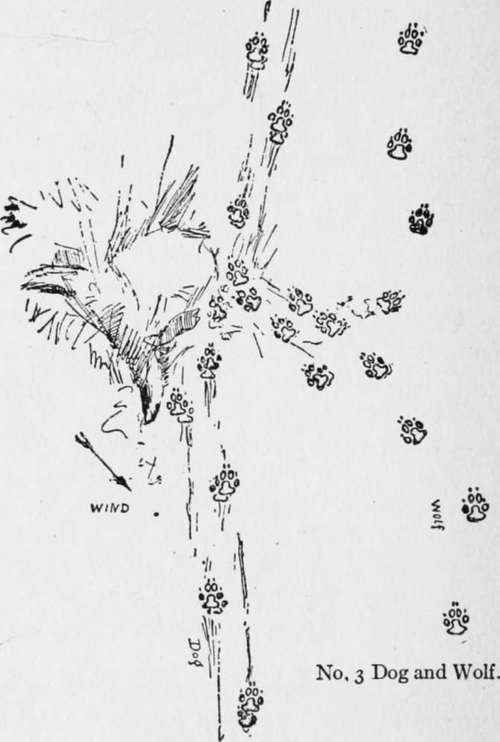Wolf
Description
This section is from the book "The Book Of Woodcraft", by Ernest Thompson Seton. Also available from Amazon: The Book of Woodcraft.
Wolf
It is well at this time to compare the track of the dog with that of the wolf. I have made dozens of drawings, casts, prints, photographs, and studies of wolf and dog tracks; and have not found a single reliable feature that will distinguish them. One hunter says the wolf has the relatively small outer toes. Yes, sometimes; but not when compared with a collie. Another says that the wolf's foot is longer; but not when compared with that of a greyhound, staghound, or lurcher. Another, the wolf's foot is larger; yet it will not rank in size with that of a St. Bernard or a great Dane. The wolf lifts his feet neatly without dragging his toes; but so do many dogs, especially country dogs. Thus all these diagnostics fail. On the whole a wolf is a better walker than a dog. His tracks do usually register, but not always, and in some wolves rarely.
If a wolf-track in the snow be followed for a mile or two, it will be found to go cautiously up to an unusual or promising object. (Illustration 3.) It is obviously the trail of a suspicious, shy creature while the dog-trail even in the wilderness. One can only judge by probabilities.

I have often heard inexperienced hunters boast that they could "tell them every time"; but old hunters usually gay, "No man can tell for sure" is direct, and usually unafraid. But this does not apply to the dogs which poach or kill sheep. There is therefore no sure means of distinguishing them.
Continue to:
- prev: Dog And Cat
- Table of Contents
- next: Rabbits And Hares
Tags
bookdome.com, books, online, free, old, antique, new, read, browse, download
